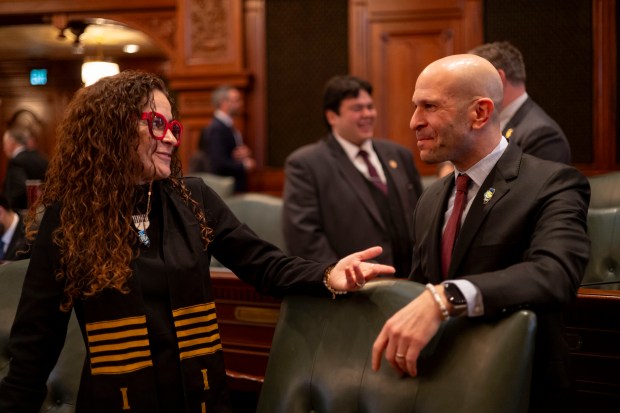As people in the Chicago area worry about inflation as the cost of the things they need continues to rise, there are a lot of places to live in the United States that are more expensive than Chicagoland and Lake County.
Thomas Walstrum, a senior business economist with the Federal Reserve Bank of Chicago, said Chicago is the second least expensive place to live among the country’s largest city and suburban locales when it comes to the cost of real estate.
“Chicago is the second-cheapest place to live of the 20 largest metropolitan areas in terms of home prices,” he said. “The Midwest has had the lowest housing costs for the last 10 years.”
Walstrum talked about business growth, the cost of goods, productivity and more at the Lake County Chamber of Commerce’s 16th-annual Forecast Luncheon Wednesday in Mundelein, giving the local business community an idea of what to expect in 2024.
Demand for manufacturing will continue to grow, but at a lesser rate than other sectors of the economy. Walstrum said while the overall gross domestic product (GDP) is anticipated to increase by 2.2%, manufacturing production will likely grow by 1.7% annually.
After the economy grew more quickly than expected in 2023 with GDP growing 2.5% adjusted for inflation, Walstrum said studies he has seen forecast a 1.5% growth in the economy this year.
“This doesn’t mean a recession, but it means it is below trend,” he said. “This is not a bad thing. The economy is still growing. It’s just growing a little slower.”
With much of the Midwestern economy rooted in manufacturing, Walstrum said it contributes to lower housing prices locally. The percentage of the economy devoted to manufacturing has dropped from 27% in the 1950s to closer to 10% now.
“Housing costs in Illinois are lower now than at the height of the bubble,” he said. Manufacturing is a shrinking share of the economy. Manufacturing will grow much slower than the (overall) economy.”
Increased interest rates are having an impact on the cost of housing. Walstrum said it will not affect people with mortgages in place who are not moving, but it will be a challenge for those who want to move or must relocate. He expects interest rates to start ticking lower.

Though inflation sent the price of some goods much higher two years ago, he said it came under control last year as the Federal Reserve increased interest rates to slow spending.
“If the next six months are like the last six months, we’ll go up about 2%,” Walstrum said. “The supply chain problems got better, he added, referring to pandemic-era issues that caused prices to spike.
Unemployment has seen historic numbers in the past year at levels like 3.8%, but he said he anticipates a slight uptick to 4.1% next year and 4.4% in 2027. An economy with 2% inflation and 4% unemployment should not be feared.
“When you have that, you’re going to have a rosy picture,” Walstrum said. “We’ve had below-trend growth (amid) slight cooling of the labor market.”
Generally, he said employment growth is slower in Illinois and the Midwest than it is nationally. The trend is not new.
“It’s been that way for decades,” Walstrum said.





